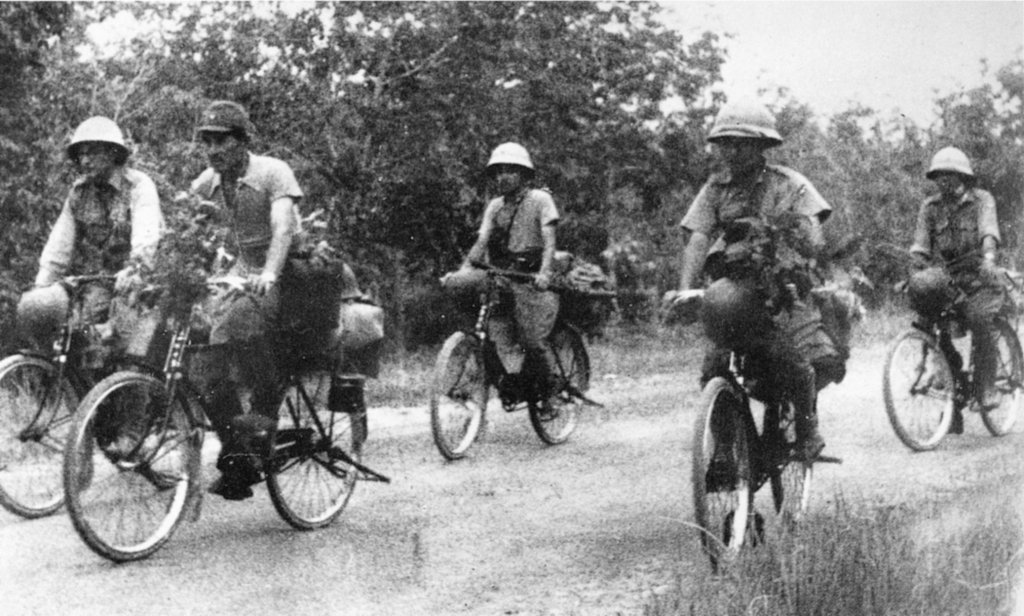

Believe it or not, you’ve almost certainly played with a secret weapon before. Well, not literally a weapon, but Japan’s secret ace-in-the-hole for their invasion of Malaysia in 1941. In preparation for challenging logistics while fighting in jungles on islands, Japan ordered 6,000 bicycles for each of its attacking divisions, changing military history.
Shockingly, they made a huge difference and would probably still be useful today.
Bicycles’ history in combat
The use of bicycles in war has a long history, but it is rarely used in actual combat. The modern bicycle, with two even wheels and a chain connecting the pedals to the back wheel, was first invented in 1885, and militaries began experimenting with it and earlier designs the same year.
Europe quickly embraced the bicycle for message couriers, some reconnaissance, and, in rare cases, moving infantry troops. By World War I, bicycles were a common feature of warfare. Combatants even experimented with welding bicycles together to create ambulances, mobile machine gun platforms, and more. But as the fight settled into trench warfare and the armies industrialized, bicycles got smaller and smaller roles further from the frontlines.
In World War II, bicycles were, again, mostly for use behind the lines. Except with Japanese troops in amphibious campaigns.

Japanese invasion of Malaya
The Japanese at Malaya were the baddies, but they gave themselves a real challenge. Malaya was occupied by the British, and their engineers quickly destroyed bridges and used the terrain to limit Japanese troop movements. While Japan had air and naval supremacy, Britain had knowledge of the terrain, an artillery advantage, and started fully deployed.
Japan had to maneuver across the peninsula to win, even as bridge after bridge blew from British explosives. The British counter-mobility campaign slowed Japanese armor, but it did little against the bicycle troops that Japan still fielded in every infantry division on the campaign.
Each attacking Japanese division had 6,000 bicycles, allowing this highly mobile force to exploit openings quickly, move troops between fights, and carry more weight. The use of bicycles drastically cut down on the need for fuel. And Japanese soldiers learned to ride on their rims, allowing them to keep going even without rubber for tires.
British failures
First, British troops sometimes heard the rattling of rims on the road and assumed tanks were inbound, forcing lightly armed Brits to flee. And Japanese troops could ride through the jungle, quickly getting behind entrenched British units focused on roads.
Japan quickly made it to the capital of Singapore with its forces largely intact, well-supplied, and ready to fight. Britain, with its forces still arrayed across the island and with tens of thousands missing or captured, gave up the capital within weeks.
It would be easy to overstate the impact of Japanese bicycles on the fight. The naval superiority of Japan was, obviously, a big deal in a peninsula campaign. And Japanese air superiority allowed it to break up British troop concentrations. But the ability to rapidly move troops in good order with large numbers of supplies tipped the scales toward Japan, and it was thanks to the humble bicycle.
